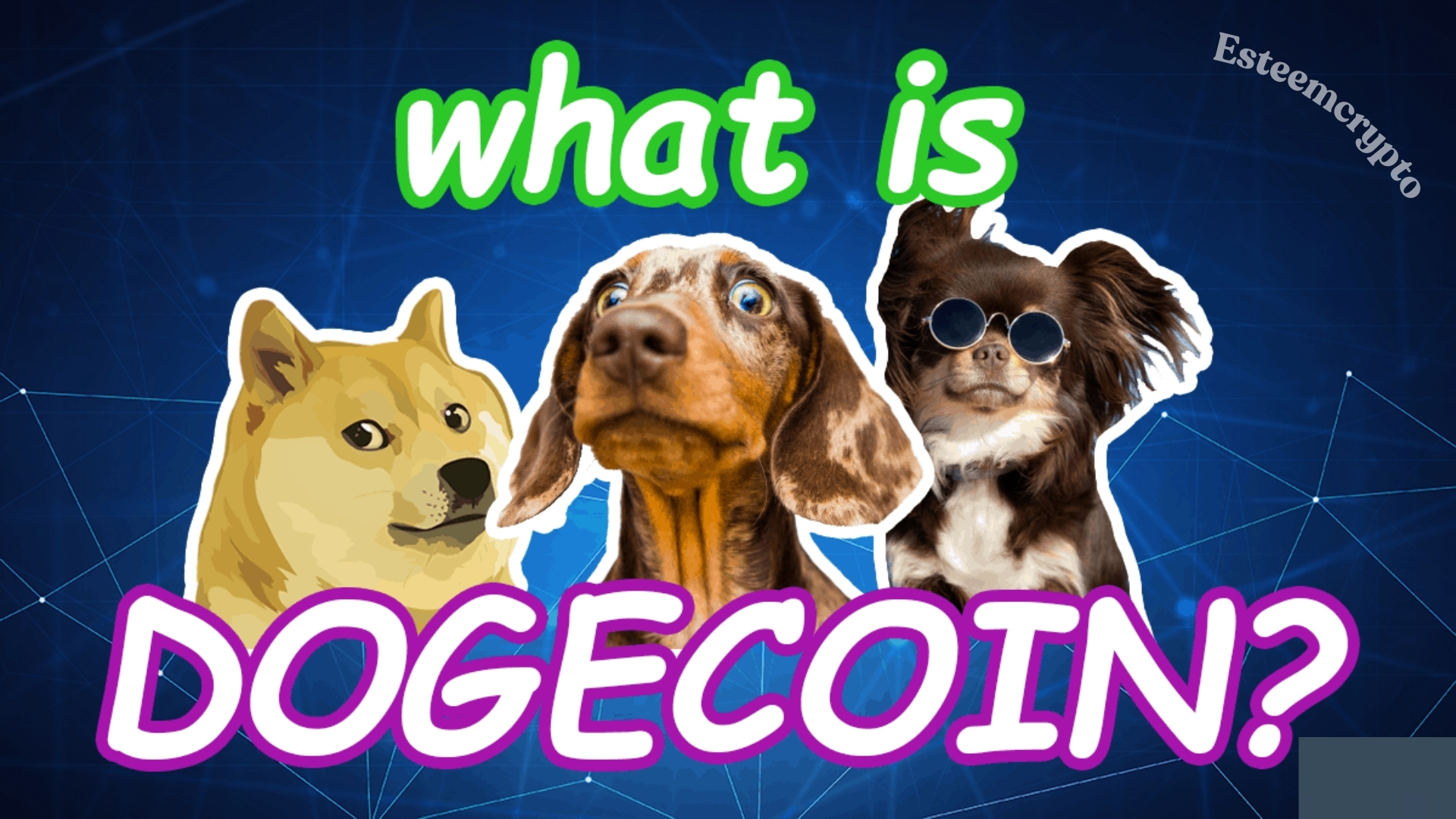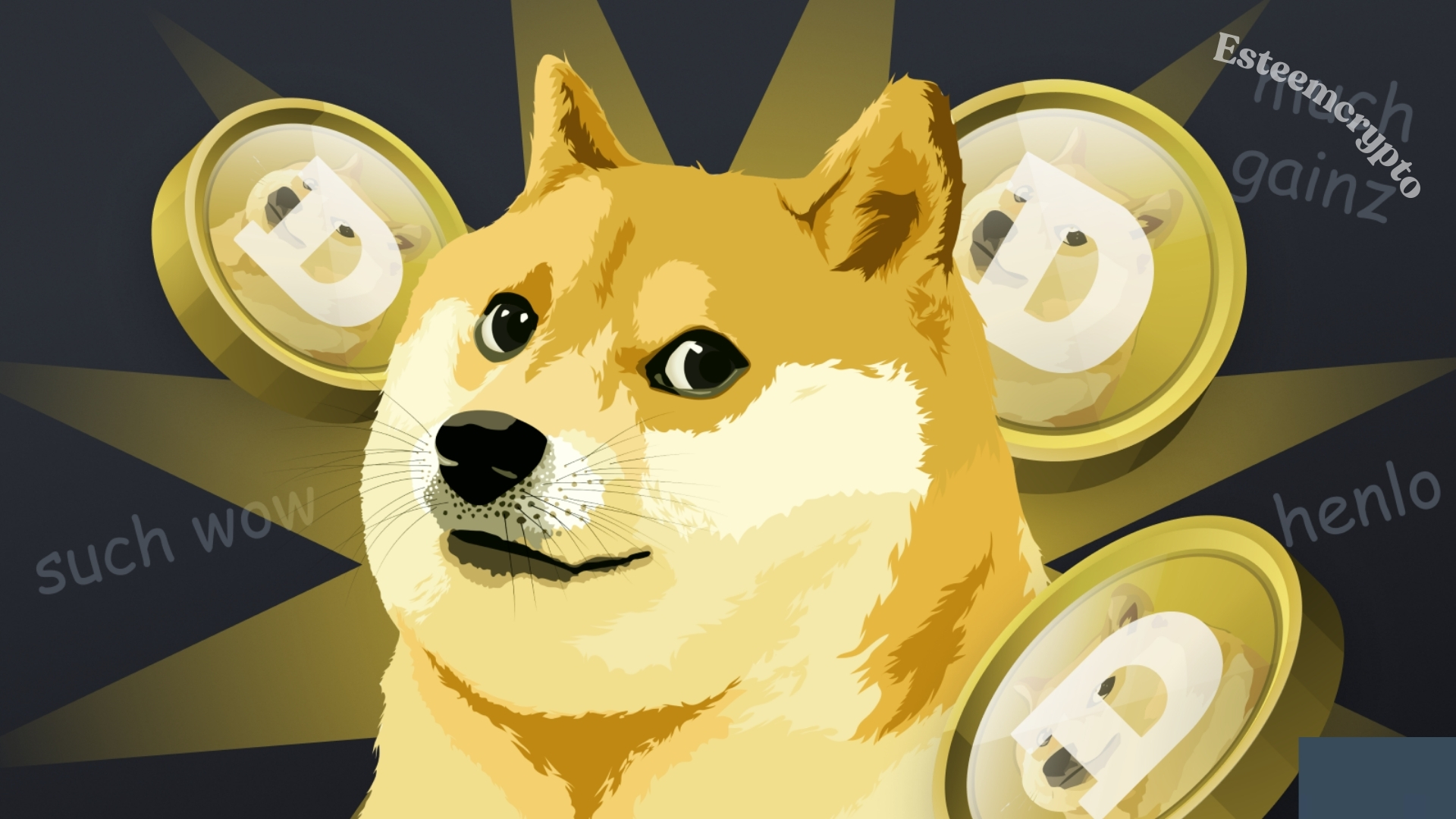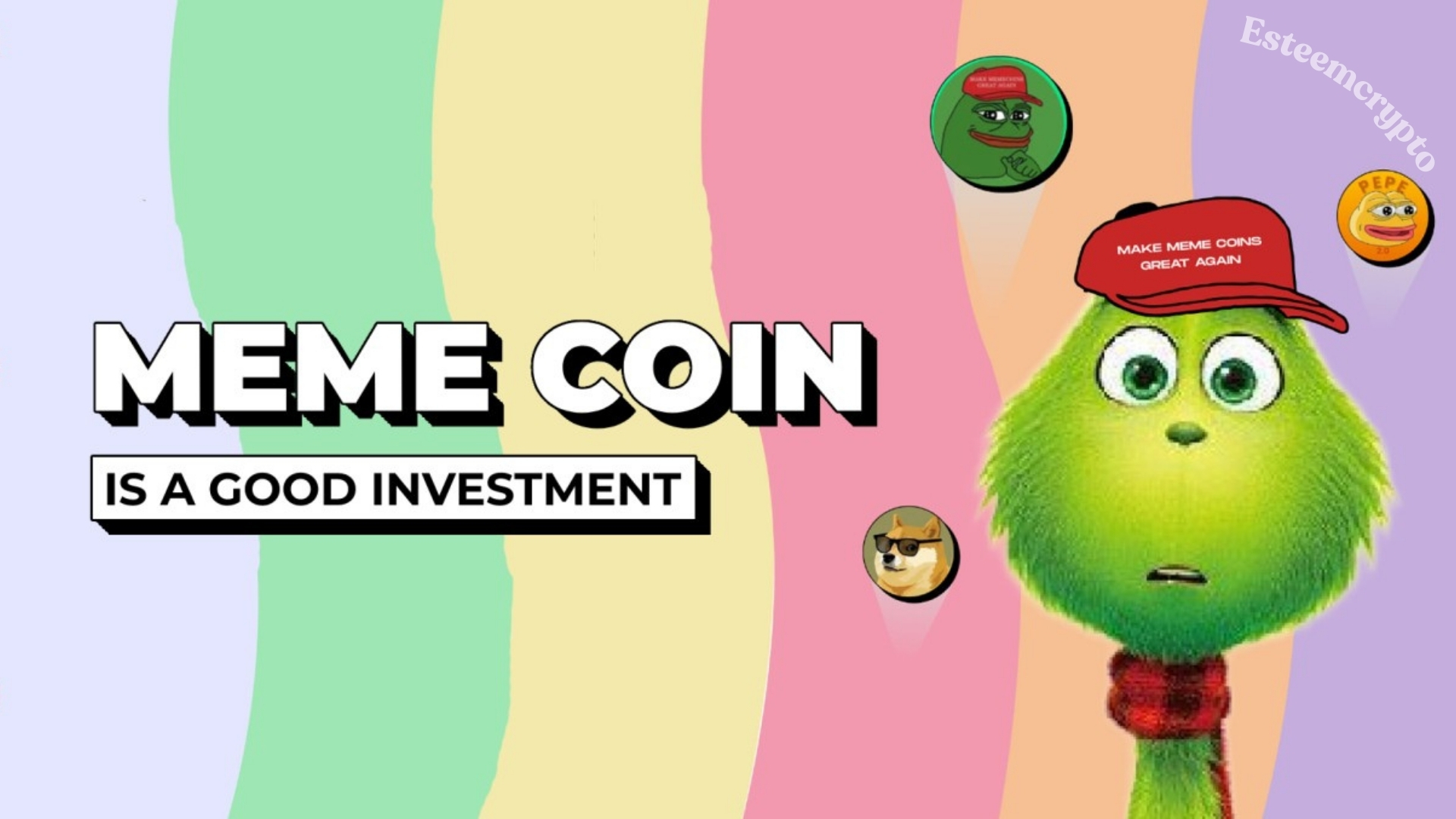What is Dogecoin? An Ultimate Guide By Esteemcrypto

What is Dogecoin? In 2013, the cryptocurrency Dogecoin DOGE $0.16 was born out of pure comedy rather than a pressing necessity to solve a specific problem. The “Doge” meme, which features a Japanese dog breed called a Shiba Inu sitting with its paws folded, inspired the cryptocurrency. Overlaid on top of the dog’s image are phrases praising illogical grammar.
The quirky and hilarious culture of the cryptocurrency ecosystem, which started to take shape in 2009 with the release of Bitcoin BTC $66,981, inspired Dogecoin. Thousands of additional crypto assets have emerged since Bitcoin. This blockchain-based asset can move and store value, each claiming to offer something unique, whether it increased anonymity, the ability to tokenize real-world goods, art, and more.
Since Bitcoin’s source code is freely available, other initiatives have utilized it to build their blockchains and digital assets. It took software programmers Billy Markus and Jackson Palmer hours to construct Dogecoin using Luckycoin’s code after Litecoin (LTC) and Luckycoin (LKY) were built using Bitcoin’s code. The Dogecoin project was abandoned in 2014 by Palmer and Markus. In 2015, Markus bought a used Honda Civic with all proceeds from the sale of his Dogecoin holdings.
Fundamentals of DOGE
Dogecoin pays out 10,000 DOGE to miners that succeed. Initially, each Dogecoin block would have been worth one million DOGE. On the other hand, for every 100,000 blocks, the cryptocurrency’s developers implement a halving mechanism that cuts block rewards in half. Even though it no longer uses this halving approach, Dogecoin still pays out 10,000 DOGE for each block.
From a technical standpoint, Dogecoin’s GitHub page has documented the asset’s continuous modifications over the years. The fees associated with Dogecoin continue to be a selling feature for the investment and its development. Approximately $0.44 has been the average Dogecoin transaction cost since January 2021. The average Dogecoin transaction fee peaked at about $2.52 in May 2021 compared to all levels before and after. Dogecoin’s transaction costs are pretty modest compared to other cryptocurrency assets.
The inflationary nature of DOGE means that its price could fluctuate in the future, even though its supply is unlimited. Dogecoin’s long-term value could be impacted by its inflationary nature, which perpetually adds to the circulating supply. Also, as of March 25, 2024, just 533 Dogecoin wallet addresses owned more than 80% of the DOGE supply. This suggests that significant transactions by these individuals could affect prices.
Dogecoin Use Cases

In 2021, the price of Dogecoin skyrocketed thanks to the asset’s devoted fan base and years of dedicated cryptocurrency development. Unfortunately, the coin has no distinguishing characteristics that would make it the global preeminent store of value or currency.
Maybe the most critical factor is the limited amount of Dogecoin. There is no cap on the total supply of the coin. Due to the daily mining of around 14 million extra coins, Dogecoin has an inflationary impact on its value. Deflationary and rare, Bitcoin, on the other hand, has a maximum supply of just 21 million.
Nevertheless, Dogecoin can function as a medium of exchange for online or offline tips and payments. Its USD pricing per unit is far lower than other crypto assets like BTC, enabling users to deal in total quantities instead of fractions of BTC. Due to its cheap per-unit cost, Dogecoin might be a good choice for smaller, more frequent transactions.
Marketing meme coins to a mainstream audience has also been successful for the coin community. Conversely, Dogecoin is not immune to the unpredictability that plagues the cryptocurrency market. Maintaining community interest and creating practical use cases beyond its popularity is crucial to long-term sustainability.
Due to its unique technical composition, Dogecoin can process transactions much faster than Bitcoin. Unlike Bitcoin’s ten minutes, the confirmation period for a block in Dogecoin is only one minute. Since both Dogecoin and Bitcoin use a one-megabyte block size, the difference is that Dogecoin’s blockchain produces more blocks every second. Bitcoin’s reputation as a store of value has grown in recent years despite earlier complaints about the cryptocurrency’s sluggish transaction speed.
Price History of Dogecoin
Dogecoin has maintained a consistent price below $0.01 per coin from 2013 to December 2020. The cost of Dogecoin peaked at around $0.018 in early 2018, dropping below the one-cent mark for the next few months and years.
For a brief moment in early January 2021, the price of Dogecoin surged back above $0.01. Also, the asset produced a significant price increase in late January, with Dogecoin soaring to approximately $0.07 per coin in 48 hours, or two daily candles. The asset’s price per coin hovered at $0.088 a few days later. The coin’s price consolidated for weeks after falling to the $0.04 region, which set the stage for its quick ascent in price.
Just under $0.74 was the price of a Dogecoin transaction in May 2021. The enthusiasm for the asset and its community of users were the primary factors in its meteoric price increase. Following August 2021, Dogecoin’s price fell steadily until June 2022 before leveling off until October 2023, when it began to rise again. As of the beginning of 2024 Q1, one Dogecoin was worth $0.15.
Dogecoin Community and Hype
The 2020 TikTok video bubble caused a 35% increase in Dogecoin price and a 2,000% increase in volume. A member of the Reddit forum r/WallStreetBets, famous for its influence on the cost of GameStop stock in early 2021, was among the many who took an interest in Dogecoin in 2021.
A Twitter user going by the handle “WSB Chairman” wondered aloud whether Dogecoin had ever surpassed the $1 price point around January 2021, when GameStop’s stock price surged. After the tweet, the cost of Dogecoin increased to around $0.07.
Elon Musk, CEO of Tesla, also contributed to Dogecoin’s 2021 surge in popularity through tweets about the cryptocurrency. Among the many tweets on the coin’s progress was an image from The Lion King featuring Rafiki and Simba, with the heads of Elon Musk and the Doge dog superimposed on each other.
The Dogecoin community is quite active on Reddit and other social media sites. There was a deluge of Dogecoin-related traffic on Google and Twitter during its 2021 boom, and the digital asset received coverage in major media outlets. At least once in 2021, Dogecoin’s single-day trading volume surpassed Bitcoin’s, with billions of dollars worth of the coin traded.
Stories of hacks, racing cars painted with Dogecoin, and other happenings abounded in the years after Dogecoin’s launch. According to one popular narrative, Dogecoin donations helped support the 2014 Winter Olympics run of Jamaica’s national bobsled team.
Also Read: Trending Altcoins to Watch in 2024
How to Buy, Sell, and Spend DOGE

How to buy and sell DOGE
Trades in Dogecoin are similar to those in other well-known cryptocurrencies. Users can purchase and trade the canine-themed coin on various cryptocurrency platforms, including multiple US-based exchanges.
To purchase DOGE on an exchange, you must deposit fiat money (such as dollars or euros), stablecoins, or any other cryptocurrency into the exchange. The exchange also allows users to sell DOGE and send cash or other cryptocurrencies. Furthermore, interested parties can also engage in peer-to-peer (P2P) trading of DOGE. Trading Dogecoin is quite similar to trading Bitcoin or any other cryptocurrency.
How to store DOGE
Users can maintain DOGE on the cryptocurrency exchange they got it on, giving them some control. Dogecoin holders also have the option of using a wallet that they host themselves. These wallets offer superior protection and privacy, and users must self-custody their crypto assets instead of using exchanges. Two possible choices are hardware wallets and local wallets. Nevertheless, a user’s preferred wallet needs to have the capacity to store Dogecoin. Users must transfer their DOGE holdings from the exchange to their wallet address to store them in their self-hosted wallet.
Where to spend DOGE
One possibility is to put it on a cryptocurrency exchange, sell it, and withdraw or transfer the proceeds. Dogecoin users can also spend their DOGE by selling it for cash and adding it to their crypto card. This past year (2021), the Dallas Mavericks of the NBA began accepting Dogecoin as payment for NBA merchandise and tickets.
Are Memecoins a Good Investment?

The price of meme coins like Dogecoin and Shiba Inu SHIB $0.000024 has fluctuated wildly, primarily due to speculation and online buzz rather than actual business needs or worth. They have a lot of potential for positive and negative outcomes, making them high-risk investments.
Memecoins often lack long-term sustainability and practicality, while some investors have profited from their volatility. Investment in meme coins is fraught with uncertainty, which adds to the already high risk associated with cryptocurrencies.
Future of Dogecoin
In its uncertain future, Dogecoin faces both possibilities and threats. Price fluctuations and greater public acceptance could result from its enduring appeal, driven by a passionate community and infrequent endorsements from notable personalities.
There is a risk to its sustainability in the long run due to its inflated price, reliance on hype, and relative lack of technical development in comparison to other cryptocurrencies. Several variables, including the level of support from users, the mood of the cryptocurrency market, and the use of Dogecoin over time, will decide the cryptocurrency’s trajectory in the future. Its future is challenging to foresee confidently, yet it defies standard expectations.




